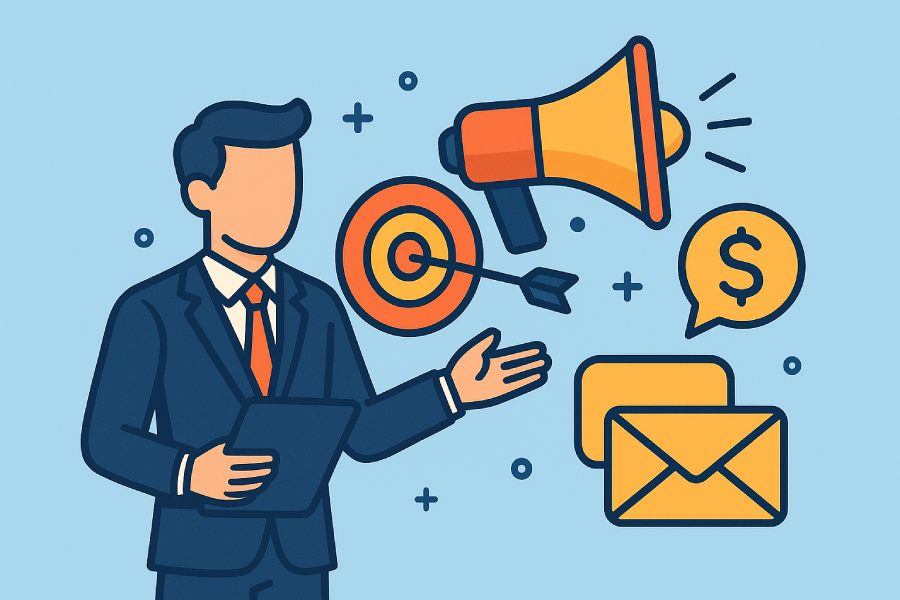A Comprehensive Look At Outbound Lead Generation Techniques That Work
Outbound lead generation remains a powerful strategy for businesses looking to actively reach and engage potential customers. Unlike inbound methods, which rely on prospects discovering you, outbound techniques put your message directly in front of targeted audiences. From cold emailing and social selling to strategic networking and paid ads, these approaches help businesses build predictable sales pipelines. When executed correctly, outbound lead generation drives faster results and higher-quality leads. It requires precision, personalization, and consistency to stand out in a competitive landscape. Let’s explore the most effective outbound lead generation techniques that truly work.
Understanding Outbound Lead Generation: Definition and Importance
Outbound lead generation is a proactive sales and marketing approach where organizations actively initiate contact with potential customers, as opposed to waiting for prospects to find them through inbound channels. This method plays a crucial role in modern B2B lead generation strategies, particularly in industries characterized by longer sales cycles and complex decision-making processes.
By leveraging outbound lead generation, companies can more effectively fill the sales funnel, accelerate prospect engagement, and cultivate meaningful relationships that convert cold leads into sales-qualified leads (SQLs). The importance of outbound lead generation lies in its ability to align closely with evolving B2B buying behavior. In many cases, economic buyers and decision-makers require multiple touchpoints and personalized messaging tailored to their unique prospect pain points.
Outbound lead generation facilitates this through targeted multi-channel outreach, encompassing cold calling, cold emailing, social media channels like LinkedIn, and new outreach channels such as WhatsApp and Slack Connect. When strategically executed, these activities complement inbound efforts like content marketing and demand generation, creating a holistic sales and marketing alignment that drives revenue generation.
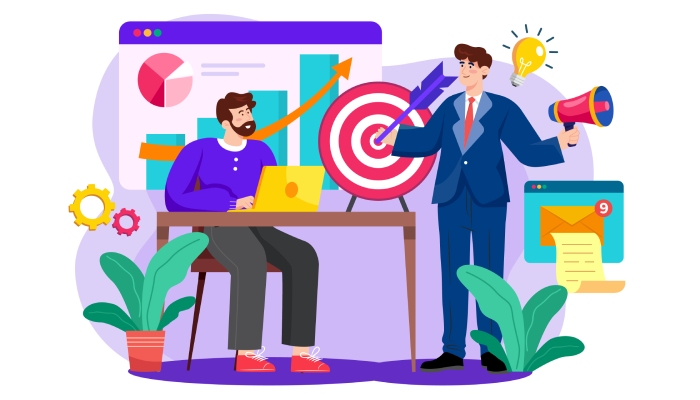
Key Differences Between Outbound and Inbound Lead Generation
Understanding the nuances between outbound and inbound lead generation is foundational for designing effective lead generation campaigns. The primary distinction lies in initiation: outbound lead generation relies on sales teams reaching out to prospects through deliberate actions, whereas inbound lead generation depends on attracting prospects through ungated content, SEO, social selling, and brand marketing.
Outbound lead generation demands rigorous account mapping and prospect qualification, with methodologies such as the BANT (Budget, Authority, Need, Timing) framework or the PACTT framework assisting sales development representatives (SDRs), business development representatives (BDRs), and marketing development representatives (MDRs) in evaluating leads. This intentional approach contrasts with inbound leads, which often enter the funnel as marketing-qualified leads (MQLs) or SQLs based on engagement metrics.
Moreover, outbound strategies excel in leveraging relationship-building via personal branding and prospecting creativity. Techniques such as multi-threading stakeholders—engaging not only decision-makers but also users, champions, and blockers—are more prevalent in outbound outreach. Conversely, inbound efforts typically focus on broader content visibility and demand generation to attract prospects passively.
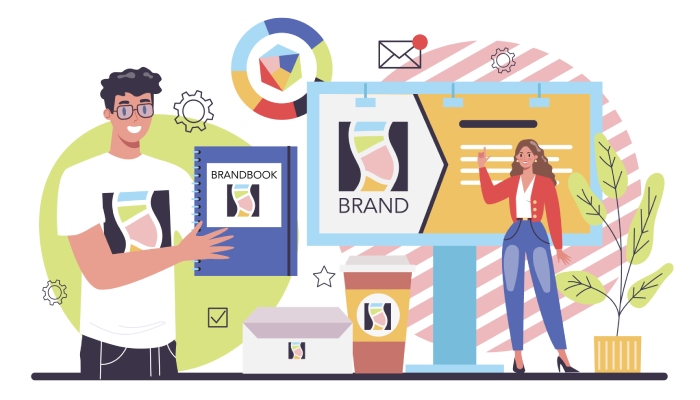
Identifying Your Ideal Customer Profile for Outbound Campaigns
A critical early step in any outbound campaign is defining the Ideal Customer Profile (ICP). The ICP encapsulates characteristics of organizations or individuals most likely to benefit from your product or service, ensuring sales and marketing resources target the right audience.
In the context of outbound lead generation, account mapping becomes indispensable. This process involves assessing firmographics, technographics, and behavioral factors that align with historical success patterns. Tools such as Kaspr and Cognism facilitate data enrichment and accurate contact discovery, improving prospecting efficiency.
Furthermore, understanding B2B buying behavior within target accounts enables refined segmentation. For instance, recognizing the roles of economic buyers versus users and champions within the buying group informs sales messaging relevancy and multi-threading strategies. Incorporating personal branding in outreach—establishing oneself as a subject-matter expert or creator mode influencer on LinkedIn and other platforms—also enhances connection rates with prospects.
By combining ICP insights with creative prospecting methods, sales development representatives can tailor personalized messages aligned with value-based selling principles. This focus on solutions that directly address prospect pain points within the sales funnel creates higher engagement levels and smoother progression toward qualification.
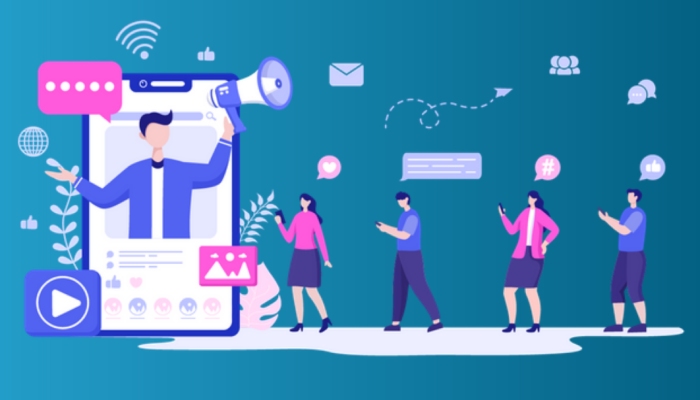
Crafting Effective Cold Email Campaigns That Get Responses
Cold emailing remains a cornerstone of outbound lead generation. When executed with precision, it serves as an invaluable tool for initiating conversations with cold leads. To maximize effectiveness, campaigns must emphasize personalization, relevance, and strategic sequencing aligned with a well-defined sales cadence.
The first step to crafting impactful cold emails is leveraging account and contact data sourced from platforms like Salesloft or Cognism. This ensures messages address the appropriate economic buyers and decision-makers within the targeted ICP. Incorporating elements of creative prospecting—such as referencing industry influencers, recent company achievements, or relevant pain points—heightens message personalization.
Value-based selling should permeate email copy, clearly outlining the unique benefits and ROI your solution delivers. In addition, integrating social proof and specific call-to-actions encourages response rates. Optimal sequences typically blend cold emailing with complementary touchpoints like direct messaging on LinkedIn or follow-up voice notes to reinforce connection.
Video outreach has emerged as a powerful enhancement to email campaigns. Embedding personalized YouTube videos or short TikTok clips from account executives or SDRs boosts prospect engagement by adding a human touch and demonstrating commitment to solving customer challenges.
Tracking engagement metrics and continuously refining email templates based on data insights facilitates pipeline management and accelerates lead conversion from marketing-qualified leads to sales-qualified leads.
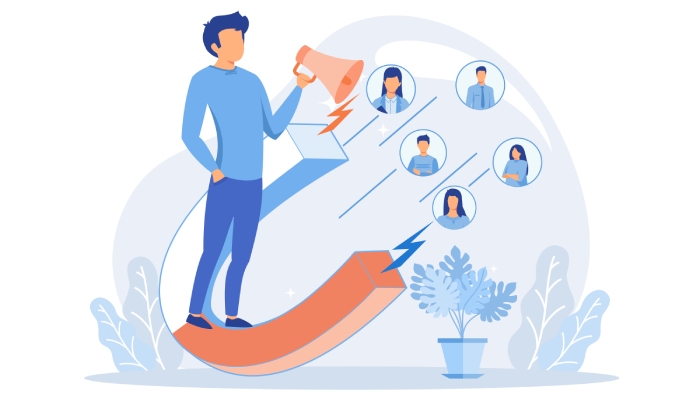
Utilizing Social Selling to Reach Prospects on Platforms Like LinkedIn
In the evolving landscape of outbound lead generation, social selling has become an indispensable lead generation strategy, particularly when targeting B2B buyers. LinkedIn stands at the forefront as the premier social media channel for engaging decision-makers, economic buyers, users, and champions within target organizations. Successful social selling hinges on personal branding and relationship-building, enabling sales development representatives (SDRs), business development representatives (BDRs), and account executives (AEs) to connect with prospects in a meaningful, contextual manner.
Building Personal Brand and LinkedIn Profile Optimization
To effectively engage prospects on LinkedIn, sales professionals must optimize their LinkedIn profile with focus on content visibility and demonstrating subject-matter expertise. Leveraging creator mode on LinkedIn allows for enhanced exposure via regular posts, YouTube videos, TikTok clips, podcast episodes, and other content marketing efforts. This multi-channel outreach approach aligns with buyer’s pyramid concepts by nurturing prospects through the sales funnel—from cold leads to marketing-qualified leads (MQLs) and sales-qualified leads (SQLs).
Creative Prospecting and Multi-threading Stakeholders
SDRs and MDRs (marketing development representatives) utilize creative prospecting techniques combining personalized messages, video outreach, and voice notes to stand out amid message clutter on LinkedIn. Multi-threading stakeholders is critical—engaging not only economic buyers but also users, champions, and even blockers to increase sales engagement and pipeline management efficiency. Tools such as Kaspr and Cognism integrate LinkedIn data for seamless account mapping and targeted outreach sequences, amplifying outbound lead generation efforts.
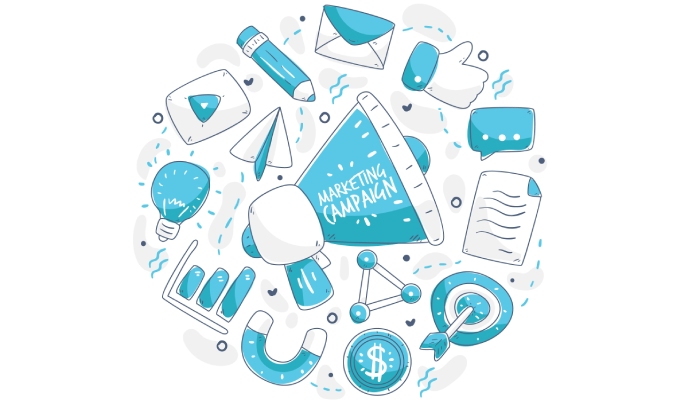
Direct Mail Outreach: How Traditional Methods Still Deliver
In the era of digital saturation, direct mail outreach remains a surprisingly effective complement to multi-channel outbound lead generation strategies. Incorporating tangible, personalized gifts or branded merchandise—sourced from Printful, for instance—can break through the noise generated by cold calling, cold emailing, and direct messaging.
Integrating Direct Mail with Digital Touchpoints
Modern direct mail campaigns work best when integrated into a structured sales cadence that blends physical and digital touchpoints. A targeted piece of mail that references previous LinkedIn interactions or follow-up calls can boost prospect engagement by reinforcing message relevancy and demonstrating value-based selling. This hybrid approach appeals to B2B buying behavior, which generally favors trust and relationship-building over purely transactional communication.
Leveraging Account Mapping and Prospect Qualification
Direct mail outreach benefits from rigorous account mapping and prospect qualification, employing frameworks like BANT (Budget, Authority, Need, Timeline) or PACTT to prioritize outreach towards prospects with the highest propensity to convert. When used in conjunction with tools such as Nureply and Salesloft, sales teams can automate multi-channel outreach—including direct mail delivery alongside email campaigns and cold outreach—optimizing pipeline velocity and revenue generation.
Using Paid Advertising for Targeted Outbound Lead Generation
Paid advertising campaigns are integral to demand generation and brand marketing strategies, especially when crafting outbound lead generation campaigns targeting ideal customer profiles (ICPs). Platforms like LinkedIn offer highly granular targeting options that align with complex B2B buying behavior, enabling precise audience segmentation by job title, industry, company size, and seniority.
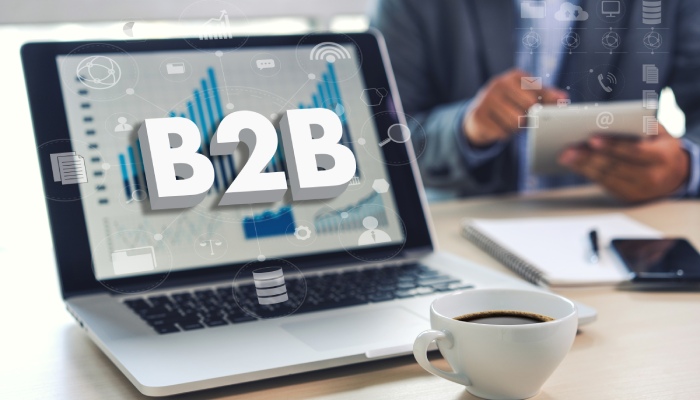
Pre-targeted Ads and Retargeting Strategies
Pre-targeted ads serve as an effective top-of-funnel lead generation strategy to warm cold leads by increasing content visibility and social selling touchpoints prior to direct outreach. Retargeting via platforms such as LinkedIn or YouTube reinforces messaging and nurtures prospects through longer sales cycles, providing vital context for value-based selling.
Synchronizing Paid Ads with Sales and Marketing Alignment
Optimal integration of paid advertising with sales and marketing alignment enhances overall campaign performance. Marketing-qualified leads generated through paid ads can be seamlessly handed off to SDRs or BDRs for personalized outreach campaigns using VoIP, Slack Connect, WhatsApp, or direct messaging channels. This multi-channel outreach fosters seamless connecting with prospects, improving prospect qualification and sales messaging relevancy.
Event-Based Lead Generation: Trade Shows, Webinars, and More
Events have long been a cornerstone of outbound lead generation strategies, offering unparalleled opportunities for networking at events, relationship-building, and engaging multi-departmental involvement within target accounts. Whether physical trade shows or virtual webinars, events contribute significantly to demand generation and pipeline management.
Maximizing Outreach Before, During, and After Events
Effective event-based lead generation encompasses creative prospecting well before events, personalized follow-ups immediately after, and sustained engagement through content marketing such as podcast episodes or YouTube videos. Crafting an optimal sales cadence around the event timeline ensures multiple touchpoints with prospects and stakeholders, enhancing both prospect engagement and multi-threading efforts.
Account Executive and SDR Collaboration
Account executives (AEs) work closely with SDRs and MDRs at events to identify decision-makers and economic buyers, leveraging in-person or virtual interactions to qualify prospects using frameworks like BANT or PACTT. Events also enable relationship-building with blockers and champions, facilitating sales outreach personalization and content visibility that supports longer sales cycles.
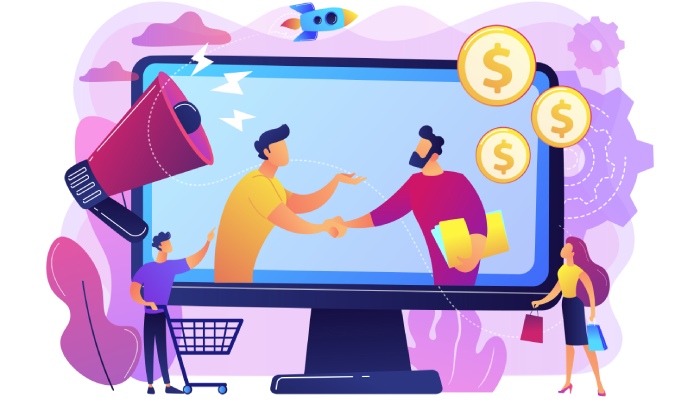
Role of Sales Development Representatives (SDRs) in Outbound Efforts
Sales development representatives are pivotal in driving outbound lead generation campaigns through targeted multi-channel outreach and meticulous pipeline management. SDRs often serve as the first point of contact, responsible for executing creative prospecting initiatives that combine cold calling, cold emailing, video outreach, voice notes, and direct messaging.
Utilizing Sales Productivity Tools and Sales Education Mode
Modern SDRs employ a variety of sales productivity tools such as Salesloft and Cognism to streamline account mapping, prospect qualification, and sales engagement analytics. SDRs also adopt a sales education mode, equipping prospects with relevant resources—case studies, ungated content, or subject-matter expert insights—to address prospect pain points early in the sales funnel.
Aligning SDR Efforts with Marketing Development Representatives and AEs
Collaboration between SDRs, BDRs, MDRs, and AEs is crucial to nurture inbound leads and outbound leads effectively through the buyer’s pyramid. This alignment ensures consistent messaging relevancy, integrates demand generation with sales outreach personalization, and culminates in high-quality sales-qualified leads. The SDR’s role in multi-threading stakeholders and connecting with prospects lays the foundation for long-term revenue generation.
Personalization Strategies to Increase Outbound Lead Engagement
In an era defined by longer sales cycles and increasing buyer expectations, personalization is a cornerstone of effective outbound lead generation. Delivering a personalized message that resonates with prospect pain points and incorporates insights from account mapping significantly enhances prospect engagement and sales messaging relevancy.
Tailoring Outreach to the Ideal Customer Profile
Leveraging data enriched by tools like Kaspr enables sales teams to tailor email campaigns, cold outreach, and video outreach based on ICP specifics and buyer personas. Executing multi-channel outreach with personalized gifts, direct messaging on Slack Connect or WhatsApp, and customized content via social media channels amplifies relationship-building efforts.
Incorporating Value-Based Selling and Sales Cadence Optimization
Value-based selling principles guide the creation of personalized messages that articulate clear ROI and address core business challenges. A well-structured sales cadence synchronizes outreach across touchpoints—email, phone, social selling, and video—to maintain momentum and increase conversion rates, even amid complex B2B buying behavior and multi-departmental involvement.
By leveraging these diverse but interconnected outbound lead generation strategies, organizations can drive more effective pipeline management, foster stronger relationships, and navigate longer sales cycles with precision and creativity. Integration of technology, personalization, and strategic multi-channel outreach will continue to shape success in B2B outbound sales efforts.
Tools and Technologies That Enhance Outbound Lead Generation
Implementing robust tools and technologies is fundamental to optimizing outbound lead generation efforts. Effective lead generation strategies increasingly rely on automation, data enrichment, and multi-channel outreach platforms to maintain consistent and personalized communication with prospects along the sales funnel.
Data Enrichment and Account Mapping Solutions
Tools like Kaspr and Cognism empower Sales Development Representatives (SDRs) and Business Development Representatives (BDRs) by providing enriched contact data and real-time account mapping. These platforms facilitate precise identification of decision-makers, economic buyers, and users within an Ideal Customer Profile (ICP), enabling highly targeted outreach that mirrors B2B buying behavior. Correct account mapping ensures multi-threading stakeholders, such as champions and blockers, are considered in outreach plans, thus reinforcing relationship-building.
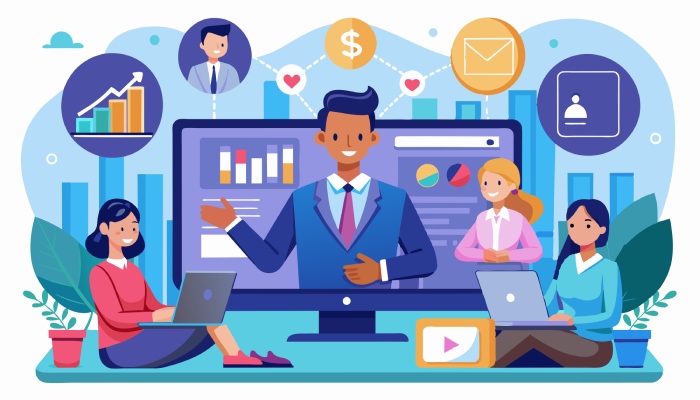
Sales Engagement Platforms and Outreach Automation
Salesloft, a leader in sales engagement technology, integrates cold calling, cold emailing, voice notes, and social media channels into a cohesive sales cadence that helps optimize touchpoints and ideal sequences. These platforms improve sales productivity by allowing Marketing Development Representatives (MDRs) and Account Executives (AEs) to automate follow-ups and personalize messages at scale, boosting prospect engagement without sacrificing relevance or value-based selling.
Multi-Channel Outreach and Social Selling Tools
Multi-channel outreach is no longer limited to email and phone calls; integrating new channels like LinkedIn direct messaging, Slack Connect, WhatsApp, TikTok, and YouTube videos enhances content visibility and social selling effectiveness. Content marketing strategies that incorporate podcast episodes and creator mode insights on LinkedIn personalize personal branding efforts for sales reps. Additionally, tools such as Printful enable sending personalized gifts and branded merchandise to key stakeholders, fostering deeper relationship-building and increasing response rates.
Sales Productivity and Analytics Tools
VoIP technology paired with pipeline management software allows seamless sales outreach personalization and effective prospect qualification by monitoring sales-qualified lead (SQL) and marketing-qualified lead (MQL) progression. Sales productivity tools deliver data-driven insights into outreach effectiveness, helping teams iterate quickly on lead generation campaigns and align sales and marketing efforts for unified demand generation.
Measuring and Analyzing the Success of Outbound Campaigns
To optimize outbound lead generation strategies, continuous measurement and analysis are necessary. Tracking performance through KPIs aligned to each stage of the sales funnel ensures resources focus on activities driving revenue generation and prospect engagement.
Defining Key Performance Indicators (KPIs)
Important Key Performance Indicators(KPIs) include lead response rates, conversion rates from cold leads to marketing-qualified leads, the velocity of sales-qualified leads through the funnel, and revenue influenced by outbound campaigns. Monitoring the effectiveness of multi-channel outreach efforts—like cold emailing, video outreach, and social media channels—provides a holistic view of campaign impact.
Leveraging Frameworks for Prospect Qualification
Applying frameworks such as BANT (Budget, Authority, Need, Timing) or PACTT helps sales teams objectively assess prospect readiness. This enables SDRs and MDRs to prioritize outreach efforts, enhance prospect qualification accuracy, and reduce the length of longer sales cycles in complex B2B environments.

Analytics Platforms and Attribution Models
Integrating platforms like Salesloft or CRM analytics tools provides granular data on sales cadence adherence, multi-threading stakeholder engagement, and the effectiveness of personalized messages. Attribution models—first-touch, last-touch, and multi-touch—clarify which channels and messaging tactics deliver the best return on investment (ROI) for outbound lead generation.
Overcoming Common Challenges in Outbound Lead Generation
Despite its efficacy, outbound lead generation faces several hurdles that sales organizations must address proactively to maintain pipeline health and maximize conversions.
- Navigating Longer Sales Cycles and Complex Buying Groups: B2B buying behavior often involves extended decision timelines and multi-departmental involvement. Employing value-based selling and engaging economic buyers, champions, and blockers through multi-threading reduces friction and accelerates movement through the sales funnel.
- Avoiding Outreach Fatigue and Improving Prospect Engagement: Creative prospecting techniques such as video outreach, voice notes, and personalized gifts retain prospect interest, preventing cold outreach from sounding generic. SDRs and BDRs can also incorporate a thoughtful sales cadence, balancing touchpoints via cold calling, direct messaging, and email campaigns to optimize engagement without overwhelming prospects.
- Aligning Sales and Marketing Teams: Poor sales and marketing alignment reduces pipeline efficiency. Shared use of data analytics, unified ICP definitions, and coordinated lead generation campaigns harmonize efforts, resulting in seamless transitions from inbound leads to outbound lead generation activities, and ultimately, increased sales-qualified leads.
Case Studies: Examples of Successful Outbound Lead Generation Campaigns
Examining real-world success stories sheds light on effective lead generation strategies and offers actionable insights into how organizations connect with prospects in evolving markets.
Leveraging Multi-Channel Outreach at Cognism
Cognism’s outbound lead generation approach combines rich data enrichment with multi-channel outreach via LinkedIn, email campaigns, and cold calling. By integrating the BANT framework and refining ICP definitions, Cognism’s Business Development Representatives efficiently engage economic buyers and champions, achieving higher sales engagement rates and accelerated sales cycle velocity.
Personal Branding and Social Selling with Jack Neicho
Jack Neicho’s methodology highlights personal branding merged with social selling on LinkedIn, utilizing creator mode to amplify content marketing efforts. His tailored messaging and relationship-building focused on connecting with prospects at multiple touchpoints, resulting in higher conversion rates and sustained pipeline management.
Innovative Outreach Sequencing at Salesloft
Salesloft’s sales engagement platform itself serves as a case study, showcasing the power of combining voice notes, video outreach, and cold emails within a data-driven sales cadence. Sales Development Representatives successfully identify blockers early and engage champions by personalizing messages based on prospect pain points using precise account mapping strategies.

Future Trends in Outbound Lead Generation and How to Prepare
The landscape of outbound lead generation continues to evolve with technology advancement, changing B2B buying behavior, and emerging communication platforms. Staying ahead requires agility and adoption of new methodologies.
Integration of Artificial Intelligence and Predictive Analytics
AI-driven tools will enhance multi-channel outreach by automating prospect qualification, personalizing messaging dynamically based on real-time data, and optimizing sales cadence for maximum touchpoint effectiveness. Predictive analytics will refine account mapping and improve targeting of decision-makers and economic buyers within extended buyer’s pyramids.
Expansion into New Outreach Channels
With the rise of platforms like TikTok and Slack Connect in professional settings, outbound lead generation teams must innovate beyond traditional channels. Incorporating short-form video content, interactive podcasts, and voice-activated messaging will enhance prospect engagement and relationship-building.
Emphasis on Education and Value-Based Selling
Buyers increasingly expect sales professionals to adopt a sales education mode. Sales reps will position themselves as subject-matter experts, leveraging personalized content marketing and thought leadership to address prospect pain points authentically. This approach reinforces trust and reduces resistance during prospect qualification.
Enhanced Sales and Marketing Alignment
Future lead generation campaigns will demand even tighter sales and marketing alignment using integrated platforms that synchronize brand marketing, demand generation, and outbound lead generation strategies. Enhanced data sharing and joint ownership of marketing-qualified leads and sales-qualified leads will drive sustained pipeline development and revenue growth.

FAQs
What are the most effective tools for outbound lead generation?
Effective outbound lead generation tools combine data enrichment (e.g., Kaspr, Cognism), sales engagement platforms (like Salesloft), and multi-channel outreach technologies incorporating LinkedIn, Slack Connect, and WhatsApp. Integrating these tools enhances account mapping, prospect qualification, and personalized messaging.
How do you measure the success of outbound campaigns?
Success is measured through KPIs such as lead conversion rates, sales-qualified leads generated, sales cadence adherence, and revenue influenced by outbound efforts. Employing frameworks like BANT and utilizing analytics platforms provide insight into pipeline health and prospect engagement efficiency.
How can sales teams address longer sales cycles?
Effective value-based selling that engages multiple stakeholders—including economic buyers, champions, users, and blockers—helps streamline longer sales cycles. Multi-threading stakeholders and maintaining consistent relationship-building touchpoints mitigate delays inherent in complex B2B buying behavior.
What role does personal branding play in outbound lead generation?
Personal branding enhances credibility and trust, especially in social selling environments like LinkedIn. Sales professionals who develop a strong personal brand through thought leadership and content visibility more effectively connect with prospects, fostering deeper relationship-building.
How is AI shaping the future of outbound lead generation?
AI enables sales teams to automate outreach personalization, predict prospect behavior, and optimize sales cadence sequences. This enhances lead qualification accuracy and streamlines multi-channel outreach, making outbound lead generation more efficient and responsive.
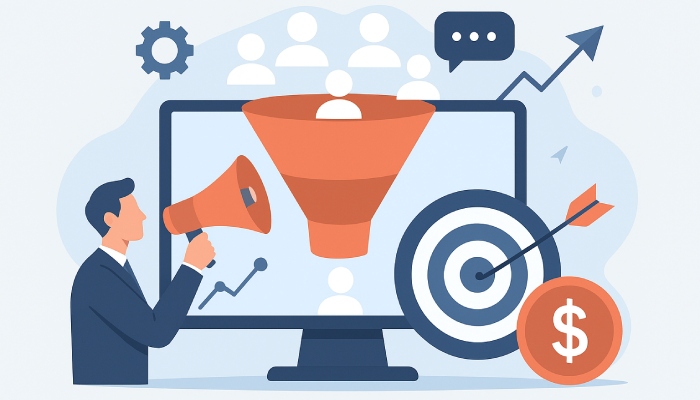
Key Takeaways
- Leveraging advanced tools such as Kaspr and Salesloft optimizes outbound lead generation by enhancing account mapping and multi-channel outreach.
- Measuring campaign success through KPIs and frameworks like BANT and PACTT ensures sales teams can refine strategies for better prospect engagement and revenue generation.
- Overcoming challenges like longer sales cycles requires multi-threading decision-makers and value-based selling to accelerate movement through the sales funnel.
- Successful campaigns combine creative prospecting with personalized messaging across diverse channels, including LinkedIn, video outreach, and personalized gifts.
- Preparing for future trends involves adopting AI, exploring new outreach channels like TikTok and Slack Connect, and strengthening sales and marketing alignment for sustained pipeline growth.

